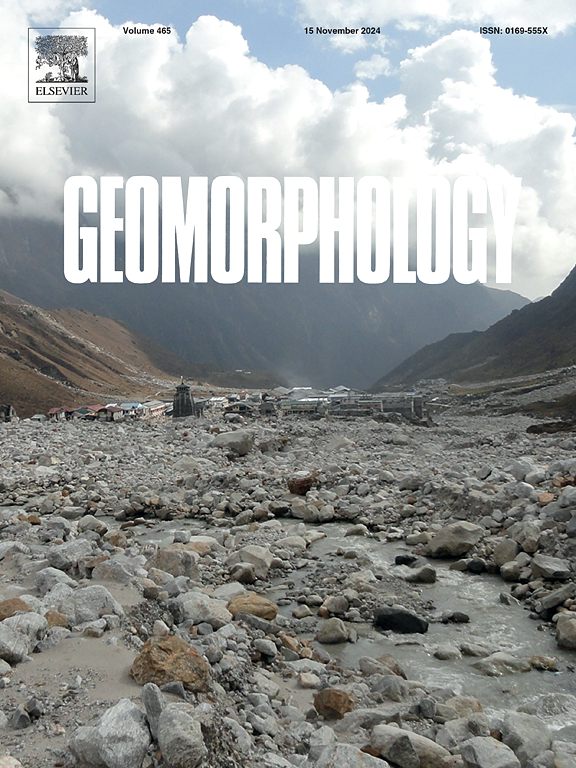Seismic response and run-out process of the Shiguchuan landslide: Insights from geological investigations and numerical simulation
Sun, Ping , Wang, Haojie , Ke, Chaoying , Sang, Kangyun , Han, Shuai , Zhang, Shuai
2025-06-01 null null 478(卷), null(期), (null页)
Tianshui City is located in the transitional zone between the Western Qinling Mountains and the Loess Plateau, an area significantly affected by strong earthquakes. Historical seismic events have induced numerous landslides in this region. Through an integrated methodology combining field investigations, drilling, and numerical simulation, the seismic response and failure mechanisms of the loess-bedrock slope are revealed, and the run-out process of Shiguchuan landslide under basic and rare seismic conditions is examined. The key findings are as follows: The seismic response of the loess-bedrock slope is primarily controlled by the thickness of the loess layer, topographic features, and the loess-bedrock interface, which exhibits significant elevation amplification, surface amplification, and loess layer amplification effects. Below the mid-slope elevation, horizontal acceleration amplification factors (AAFs) dominate over vertical components, whereas this relationship reverses above the mid-slope elevation. Spectral analysis reveals that the seismic amplification in loess-bedrock slopes exhibits pronounced frequency-dependent characteristics. Significant amplification of horizontal components (2.2-2.5 Hz) and vertical components (5-6 Hz) is observed in the upper-middle slope section. The failure mechanism of the Shiguchuan landslide is characterized by high-level shear sliding of the mid-upper slope loess along the bedrock interface. Under rare seismic conditions, the run-out and accumulation behaviors of the landslide, as determined by numerical simulations, are generally consistent with the post-failure characteristics observed through field investigations, suggesting that the Shiguchuan landslide was likely triggered by seismic ground motions with a PGA (peak ground motion acceleration) of >= 0.6 g. These results have significant implications for understanding the dynamic behavior of such landslides and the potential triggering seismic intensities.
相关推荐
- Early identification on failure mode of loess landslide: insight from case study and physical model experiment [2025-06-01]
- Early identification of potential loess landslide using convolutional neural networks with skip connection: a case study in northwest Lvliang City, Shanxi Province, China [2025-06-01]
- Juvenile plumcot tree can improve fruit quality and economic benefits by intercropping with alfalfa in semi-arid areas [2025-06-01]
- Evolutionary and dynamic processes of the Zhongzhai landslide reactivated on October 5, 2021, in Niangniangba, Gansu Province, China [2025-06-01]
- Land Use Dynamic Changes in an Arid Inland River Basin Based on Multi-Scenario Simulation [2025-06-01]



